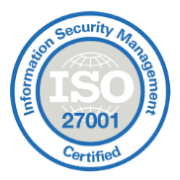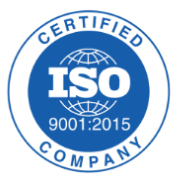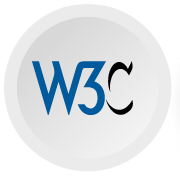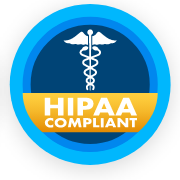Technology has become integral to our lives, impacting various industries such as manufacturing, aviation, education, retail, and more. The success of any industry depends on its workforce and providing them with the proper training is crucial for organizational growth. However, the current uncertain times, like the present, have made employee training challenging, especially with the limitations of traditional Learning Management Software (LMS) in handling remote virtual training.
Fortunately, integrating Customer Relationship Management (CRM) software like Salesforce with LMS can make a significant difference. But you might wonder how these platforms can bridge the gap and help organizations thrive. In the upcoming section, we will explore this in detail.
Salesforce is an advanced cloud-based platform streamlining processes for organizations across different industries. On the other hand, an LMS enables virtual learning by providing features like course creation, learning path determination, certification, assessment, tracking, and reporting. So far, we have discussed the problem of delivering training through these platforms. The solution lies in integrating Salesforce and LMS using an Application Program Interface (API), which involves using a set of codes to establish communication and data exchange between the two systems.
The Benefits of Integrating LMS and Salesforce for Your Organization
Cost-effective and well-organized
By integrating Salesforce LMS, a CRM platform, with an LMS like Paradiso LMS, you can eliminate duplicated tasks and enjoy significant time and cost savings. Through automation, user creation, enrollment, and learning pathways can be streamlined across both Salesforce and your LMS. This integration effectively reduces administrative workload, allowing you to focus on more crucial tasks.
Create Strong Relationships with Learners.
Enhanced Communication for Better Customer Satisfaction
Salesforce LMS integration brings a significant improvement in communication. It empowers sales teams to engage with customers, directly offering personalized and prompt service. This enhanced communication increases customer retention, loyalty, and a more powerful brand reputation. By leveraging this integration, organizations can foster better relationships with customers and positively impact their overall image.
Automation Empowers Data Tracking and Reporting
How to Integrate Your LMS With Salesforce
Integrating your LMS with Salesforce can be done in various ways, depending on your organization’s goals. Whether you’re integrating Salesforce with Paradiso LMS.
Totara, or another LMS, the right approach will depend on your goal. Here are some popular options for LMS and Salesforce integration and how they can benefit your organization.
Customer Provisioning from Salesforce to LMS
When you integrate Salesforce with your LMS, you can automatically create user accounts on your LMS when new contact records are added to Salesforce. It can be done directly or through existing integrations that already make users on Salesforce. You can set up this process to happen automatically or at specific times. For example, a more advanced integration allows you to enrol users in particular courses based on their purchases from your e-commerce site.
Here’s an example of how it works:
- A customer signs up on your ecommerce site.
- A contact record is created for them in Salesforce.
- The customer purchases on your ecommerce site.
- A purchase record is added to Salesforce.
- Salesforce starts a user account on your LMS.
- Salesforce enrols the user in relevant courses based on their e-commerce purchases.
To make this integration work, you need to connect the user accounts in your LMS with the contact records in Salesforce. You also need to establish links between the products on your e-commerce site, the corresponding items in Salesforce, and the related courses in your LMS.
Simple user Sign-up that enables Self-Registration on your LMS
Through self-registration authentication integration, a contact record is automatically generated on Salesforce whenever a user registers on your LMS. The unique identifier of the Salesforce contact record is stored in your LMS and linked to the corresponding user account, ensuring a continuous connection between the two. This linkage enables you to tailor your marketing messages effectively.
Once the Salesforce contact record and LMS user account are linked, you can easily synchronize data between them. When a user updates their profile settings on your LMS, the corresponding Salesforce contact record is automatically updated.
The integration setup typically involves:
- Mapping products in Salesforce to related products (e.g., courses) in the e-commerce component of your LMS.
- Adding a Salesforce line item for each course purchase made by customers.
- Enrolling the customer in the purchased course. The Salesforce record reflects the purchase details, which can be utilized for Salesforce workflows and automation.
By establishing this integration, you can ensure seamless data synchronization and leverage the information for effective marketing strategies.
Effortlessly Transform Completion Records From LMS to Salesforce
If you wish to transfer data from your LMS to Salesforce, you will need to establish a mapping between the two systems. Once this mapping is configured, you can seamlessly send information from your LMS to Salesforce. It includes enrollment details, completion or attendance data, certificate issuance, and other relevant information. Integrating this data transfer lets you directly inform and enhance your CRM activities within Salesforce.
Simply, mapping between your LMS and Salesforce enables a smooth flow of essential data. This data can be automatically shared from your LMS to Salesforce, providing valuable insights and supporting various CRM operations. Whether tracking user progress, recording course completions, or issuing certificates, this integration allows efficient communication between the LMS and Salesforce. Ultimately, this integration empowered your organization to leverage the combined power of both systems for better CRM functionality and informed decision-making.
Embedded Salesforce Forms in your LMS Enable Learners To Submit Requests
By incorporating Salesforce forms into your LMS, you can trigger specific workflows within Salesforce. For example, suppose a learner needs to request a reasonable adjustment for a course they are taking on your LMS. In that case, you can embed a dedicated appropriate adjustment form from Salesforce into the course.
When the learner submits the form, it initiates a Salesforce workflow that involves reviewing the adjustment request and taking the necessary actions accordingly. This flawless integration between your LMS and Salesforce ensures a simplified process for managing and addressing learner requests.
But the embedded Salesforce forms within your LMS enable learners to submit requests effortlessly, such as reasonable adjustments. Once submitted, Salesforce workflows are triggered, allowing for efficient review and appropriate action on the requests. This integration ensures that learner needs are addressed promptly and effectively, enhancing the learning experience.
3 Ways LMS-CRM Integration Can Create Better Business Outcomes
As learning management systems (LMS) evolve, a new trend emerges: integrating different departments within a company that traditionally operated independently. It includes bringing together customer relationship management (CRM) and LMS systems and fostering team collaboration and synergy.
1. Increasing Awareness Of Your Brand and Products
2. Enhancing Sales Progress Through Customer Education
3. Driving Customer Engagement and Satisfaction through Education
- It’s insufficient to make a great sales pitch and offer enticing deals. You’re going backwards if you can’t bring your vision to life and show actual results. That’s why onboarding and the learning materials used during it are crucial.
- The problem arises when you have more than just a few customers. The onboarding process can overwhelm your support teams with repetitive tasks. For instance, manually sending individual emails to each customer with course links becomes impractical as your customer base grows. Your support team spends days on this, leaving no time for meaningful conversations about maximizing product benefits.
- Integrating your CRM with an LMS solves this issue. It enables you to automatically deliver learning content to customers when they need it the most. For instance, once a customer like John signs up, you can instantly send him the Facebook advertising course. As a result, John gains immediate value, and your support team can focus on following up with him effectively.
Let’s Discover The Best LMS with Salesforce CRM Integration
Paradiso LMS is a cloud-based learning management system designed to cater to businesses of all sizes. Its user-friendly interface and intuitive course authoring tools simplify creating and delivering various learning formats, such as instructor-led training, webinars, and self-paced courses.
In addition, by integrating with Salesforce CRM, businesses can seamlessly transfer data between systems, enabling real-time tracking of training progress and performance metrics. The integration also provides advanced reporting and analytics, offering valuable insights into learner engagement and course effectiveness.
The LMS integration with salesforce offers essential features that facilitate practical employee training aligned with your business needs. By combining Salesforce with a reliable Learning Management System like Paradiso LMS, you can optimize the efficiency of your training programs and successfully achieve your goals. This powerful integration ensures optimal outcomes for your training initiatives.
Conclusion
This blog explains why integrating Salesforce LMS with your Learning Management System (LMS) is an excellent choice for the future. It discusses the fantastic features of top-notch Salesforce LMS connectors that allow you to create personalized employee training. It also highlights the benefits of combining Salesforce with Paradiso LMS, a highly regarded online training platform. Many experts from various eLearning Industries recommend Paradiso LMS and offer modern training methods to help you achieve your business goals. It’s time to say goodbye to outdated training methods and embrace effective learning through this exciting integration.


















